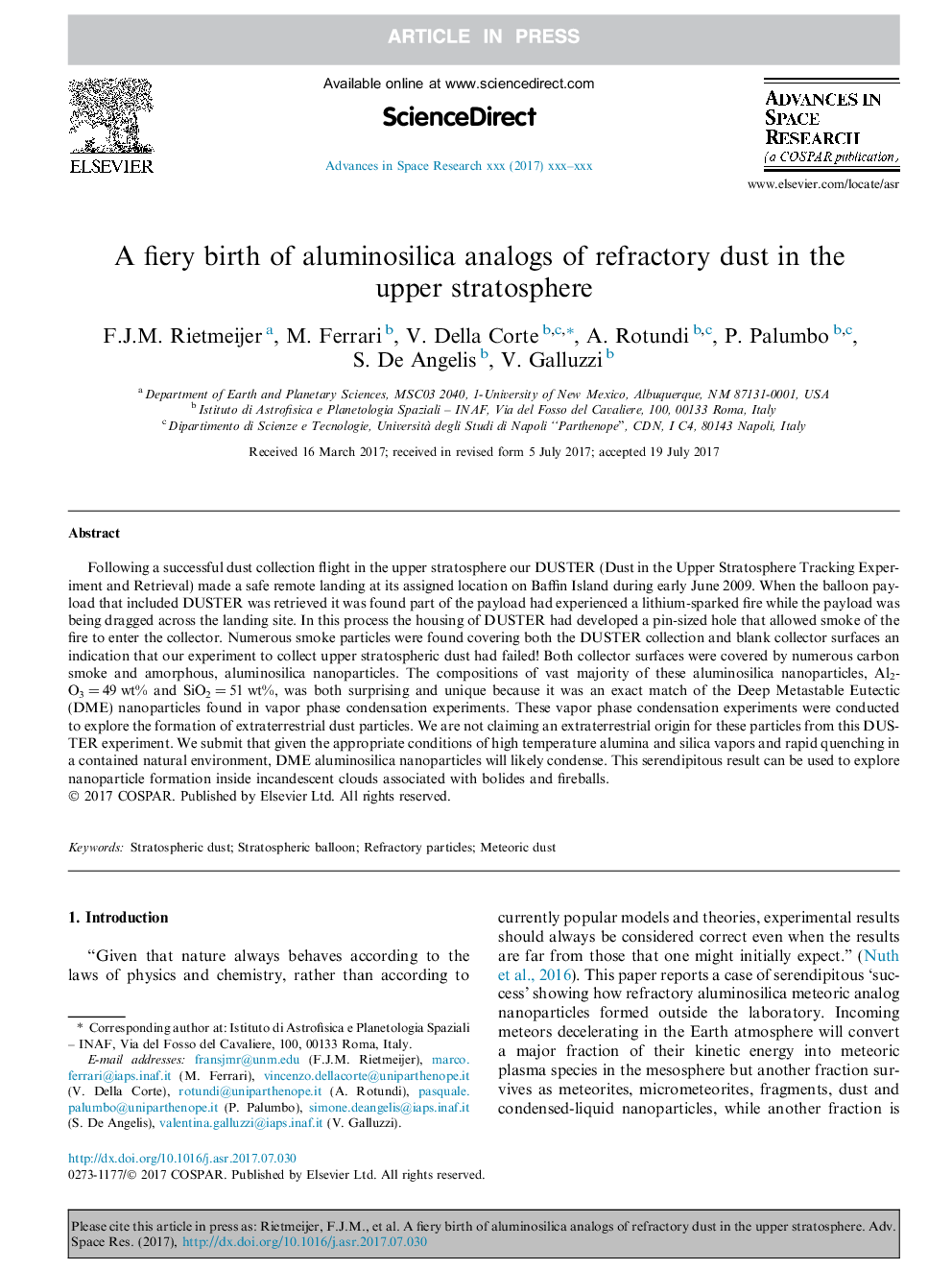| Article ID | Journal | Published Year | Pages | File Type |
|---|---|---|---|---|
| 5486431 | Advances in Space Research | 2017 | 8 Pages |
Abstract
Following a successful dust collection flight in the upper stratosphere our DUSTER (Dust in the Upper Stratosphere Tracking Experiment and Retrieval) made a safe remote landing at its assigned location on Baffin Island during early June 2009. When the balloon payload that included DUSTER was retrieved it was found part of the payload had experienced a lithium-sparked fire while the payload was being dragged across the landing site. In this process the housing of DUSTER had developed a pin-sized hole that allowed smoke of the fire to enter the collector. Numerous smoke particles were found covering both the DUSTER collection and blank collector surfaces an indication that our experiment to collect upper stratospheric dust had failed! Both collector surfaces were covered by numerous carbon smoke and amorphous, aluminosilica nanoparticles. The compositions of vast majority of these aluminosilica nanoparticles, Al2O3Â =Â 49Â wt% and SiO2Â =Â 51Â wt%, was both surprising and unique because it was an exact match of the Deep Metastable Eutectic (DME) nanoparticles found in vapor phase condensation experiments. These vapor phase condensation experiments were conducted to explore the formation of extraterrestrial dust particles. We are not claiming an extraterrestrial origin for these particles from this DUSTER experiment. We submit that given the appropriate conditions of high temperature alumina and silica vapors and rapid quenching in a contained natural environment, DME aluminosilica nanoparticles will likely condense. This serendipitous result can be used to explore nanoparticle formation inside incandescent clouds associated with bolides and fireballs.
Keywords
Related Topics
Physical Sciences and Engineering
Earth and Planetary Sciences
Space and Planetary Science
Authors
F.J.M. Rietmeijer, M. Ferrari, V. Della Corte, A. Rotundi, P. Palumbo, S. De Angelis, V. Galluzzi,
